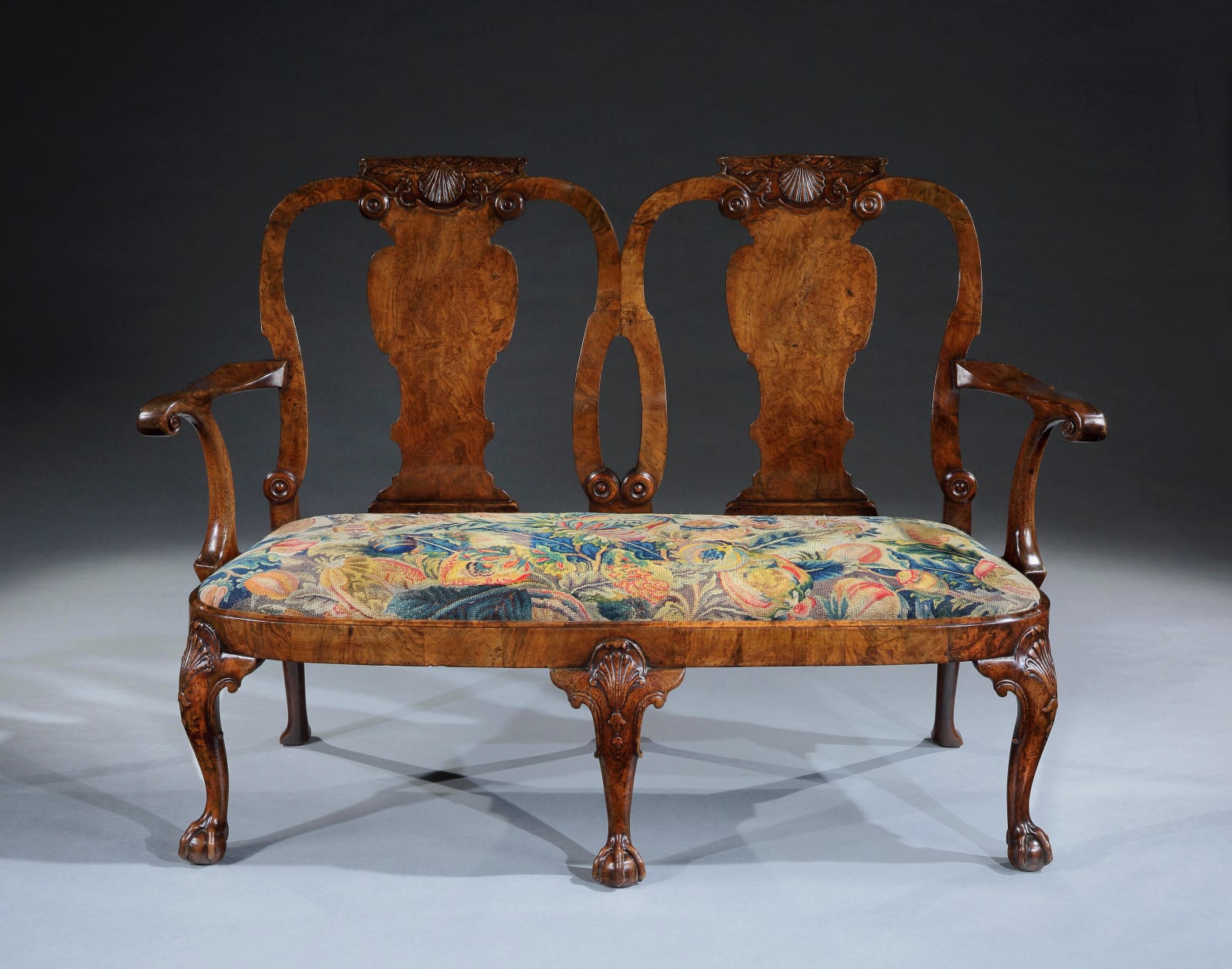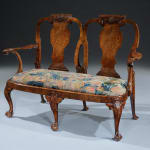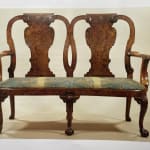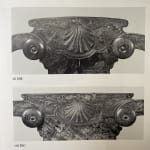Seating
A GEORGE I WALNUT AND BURR WALNUT CHAIR-BACK SETTEE
W: 148.6 cm
D: 73.7 cm
Further images
Provenance
Edward Hurst, Norfolk, UK
Private Collection: West Coast, USA
Literature
COMPARE
Set of six chairs and a double-chair-back settee in the Lady Lever Museum, Liverpool (settee 20G, LL4091), illus. Lucy Wood, The Upholstered Furniture in the Lady Lever Art Gallery (New Haven, 2008), Vol. I, pp. 245-63
See also the settee in the Percival Griffiths Collection, illus. Christian Jussel, English Furniture 1680-1760, The Percival D. Griffiths Collection (London, 2023), Vol. I, no. 128, p. 141; c.f. also Percy Macquoid and Ralph Edwards, The Dictionary of English Furniture (1954), Vol. III, p. 82, pl. V
A closely related two-seat settee attributed to Giles Grendey, featuring the same acanthus ornament, claw and ball feet, top rail shell carving and splat shape, is in the Lady Lever Art Gallery. The top rail border of the carving of the present settee differs slightly but is in fact replicated on a chair from the suite. The consistency across these different features raises the possibility that the present lot belonged to this suite. Indeed, Lucy Wood states that the Lady Lever group ‘is evidently part of a larger suite’.
Another settee to this design was in the renowned Percival Griffiths Collection, illustrated in Jussel’s study of the collection and Macquoid’s Dictionary of English Furniture.
The settee is magnificently veneered in burr walnut and the top rail is carved with shells and acanthus leaves. The splats are vase shaped and the uprights have roundels at the ends. The arms have scrolled terms. The bow-fronted drop-in seat is covered in eighteenth-century floral needlework and is raised on cabriole legs carved with shells and terminating in claw and ball feet.







